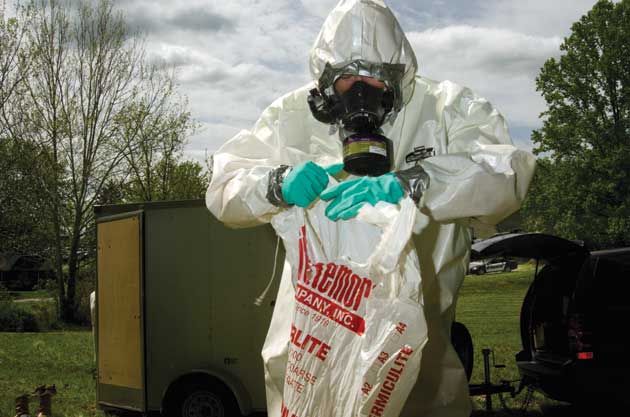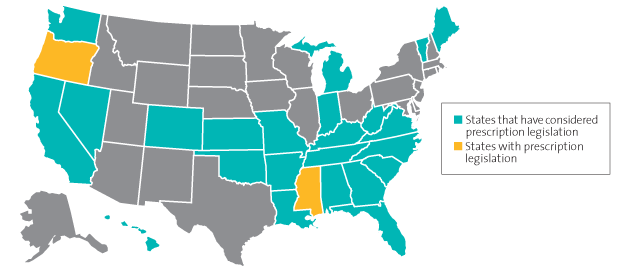With big profits on the line, the drug industry is pulling out campaign-style dirty tricks to keep selling the meds that cooks turn into crank.
Jonah Engle
Mother Jones
August 16, 2013

The first time she saw her mother passed out on the living room floor, Amanda thought she was dead. There were muddy tracks on the carpet and the room looked like it had been ransacked. Mary wouldn’t wake up. When she finally came to, she insisted nothing was wrong. But as the weeks passed, her 15-year-old daughter’s sense of foreboding grew. Amanda’s parents stopped sleeping and eating. Her once heavy mother turned gaunt and her father, Barry, stopped going to work. She was embarrassed to go into town with him; he was covered in open sores. A musty stink gripped their increasingly chaotic trailer. The driveway filled up with cars as strangers came to the house and partied all night.
Her parents’ repeated assurances failed to assuage Amanda’s mounting worry. She would later tell her mother it felt “like I saw an airplane coming in toward our house in slow motion and it was crashing.” Finally, she went sleuthing online. The empty packages of cold medicine, the canisters of Coleman fuel, the smell, her parents’ strange behavior all pointed to one thing. They were meth cooks. Amanda (last name withheld to protect her privacy) told her grandparents, who lived next door. Eventually, they called police.
Within minutes, agents burst into the trailer. They slammed Barry up against the wall, put a gun to his head, and hauled him and Mary off in handcuffs. It would be two and a half years before Amanda and her 10-year-old sister, Chrissie, would see their father again.
The year was 2005, and what happened to Amanda’s family was the result of a revolution in methamphetamine production that was just beginning to make its way into Kentucky. Meth users called it the “shake- and-bake” or “one-pot” method, and its key feature was to greatly simplify the way meth is synthesized from pseudoephedrine, a decongestant found in cold and allergy medicines like Claritin D and Sudafed.
Shake and bake did two things. It took a toxic and volatile process that had once been the province of people with Breaking Bad-style knowledge of chemistry and put it in the bedrooms and kitchens of meth users in rural America. It also produced the most potent methamphetamine anywhere.
If anyone wondered what would happen if heroin or cocaine addicts suddenly discovered how to make their own supply with a handful of cheap ingredients readily available over the counter, methamphetamine’s recent history provides an answer. Since 2007, the number of clandestine meth sites discovered by police has increased 63 percent nationwide. In Kentucky, the number of labs has more than tripled. The Bluegrass State regularly joins its neighbors Missouri, Tennessee, and Indiana as the top four states for annual meth lab discoveries.
As law enforcement agencies scramble to clean up and dispose of toxic labs, prosecute cooks, and find foster homes for their children, they are waging two battles: one against destitute, strung-out addicts, the other against some of the world’s wealthiest and most politically connected drug manufacturers. In the past several years, lawmakers in 25 states have sought to make pseudoephedrine—the one irreplaceable ingredient in a shake-and-bake lab—a prescription drug. In all but two—Oregon and Mississippi—they have failed as the industry, which sells an estimated $605 million worth of pseudoephedrine-based drugs a year, has deployed all-star lobbying teams and campaign-trail tactics such as robocalls and advertising blitzes.
Perhaps nowhere has the battle been harder fought than in Kentucky, where Big Pharma’s trade group has broken lobbying spending records in 2010 and 2012, beating back cops, doctors, teachers, drug experts, and lawmakers from both sides of the aisle. “It frustrates me to see how an industry and corporate dollars affect commonsense legislation,” says Jackie Steele, a commonwealth’s attorney whose district in southeastern Kentucky has been overwhelmed by meth labs in recent years.
Before it migrated east to struggling Midwestern farm towns and the hollers of Appalachia, methamphetamine was a West Coast drug, produced by cooks working for Mexican drug-trafficking organizations and distributed by biker gangs. Oregon was particularly hard hit, with meth labs growing ninefold from 1995 to 2001. Even then, before shake and bake, police had their hands full decontaminating toxic labs that were often set up in private homes. Social workers warned of an epidemic of child abuse and neglect as hundreds of kids were being removed from meth houses.
In despair, the Oregon Narcotics Enforcement Association turned to Rob Bovett. As the lawyer for the drug task force of Lincoln County—a strip of the state’s central coast known for its fishing industry, paper mills, and beaches—he was all too aware of the scourge of meth labs. Having worked for the Oregon Legislature and lobbied on behalf of the State Sheriffs’ Association, he also knew his way around Capitol procedure.
Bovett knew that law enforcement couldn’t arrest its way out of the meth lab problem. They needed to choke off the cooks’ supply lines.
Bovett first approached the Legislature about regulating pseudoephedrine in 2000. “The legislative response was to stick me in a room with a dozen pharmaceutical lobbyists to work it out,” he recalls. He suggested putting the drugs behind the counter (without requiring a prescription) to discourage mass buying, but the lobbyists refused. They did eventually agree to a limit on the amount of pseudoephedrine any one person could buy, but the number of meth labs remained high, so in 2003 Bovett tried once again to get pseudoephedrine moved behind the counter. “We got our asses kicked,” he admits.
Then, in Oklahoma, state trooper Nikky Joe Green came upon a meth lab in the trunk of a car. The cook overpowered Green and shot him with his own gun. The murder, recorded on the patrol car’s camera, galvanized the state’s Legislature into placing pseudoephedrine behind the counter and limiting sales in 2004.
The pharmaceutical industry fought the bill, saying it was unlikely to curb meth labs. But Oklahoma saw an immediate drop in the number of labs its officers busted, and Oregon followed suit later that year.
But the meth cooks soon came up with a work-around: They organized groups of people to make the rounds of pharmacies, each buying the maximum amount allowed—a practice known as smurfing. How to stop these sales? Bovett remembered that until 1976, pseudoephedrine had been a prescription drug. He asked lawmakers to return it to that status.
Pharma companies and big retailers “flooded our Capitol building with lobbyists from out of state,” he says. On the eve of the House vote, with the count too close to call, four legislators went out and bought 22 boxes of Sudafed and Tylenol Cold. They brought their loot back to the Legislature, where Bovett walked lawmakers through the process of turning the medicine into meth with a handful of household products. Without exceeding the legal sales limit, they had all the ingredients needed to make about 180 hits. The bill passed overwhelmingly.
Since the bill became law in 2006, the number of meth labs found in Oregon has fallen 96 percent. Children are no longer being pulled from homes with meth labs, and police officers have been freed up to pursue leads instead of cleaning up labs and chasing smurfers. In 2008, Oregon experienced the largest drop in violent-crime rates in the country. By 2009, property crime rates fell to their lowest in 43 years. That year, overall crime in Oregon reached a 40-year low. The state’s Criminal Justice Commission credited the pseudoephedrine prescription bill, along with declining meth use, as key factors.
For Big Pharma, however, Oregon’s measure was a major defeat—and the industry was not about to let it happen again. “They’ve learned from their mistakes in Oregon, they’ve learned from their mistakes in Mississippi,” says Marshall Fisher, who runs the Bureau of Narcotics in Mississippi. “They know if another state falls, and has the results that we’ve had, the chances of national legislation are that much closer. Every year they can fight this off is another year of those profits.”
 Daily Stormer The Most Censored Publication in History
Daily Stormer The Most Censored Publication in History



